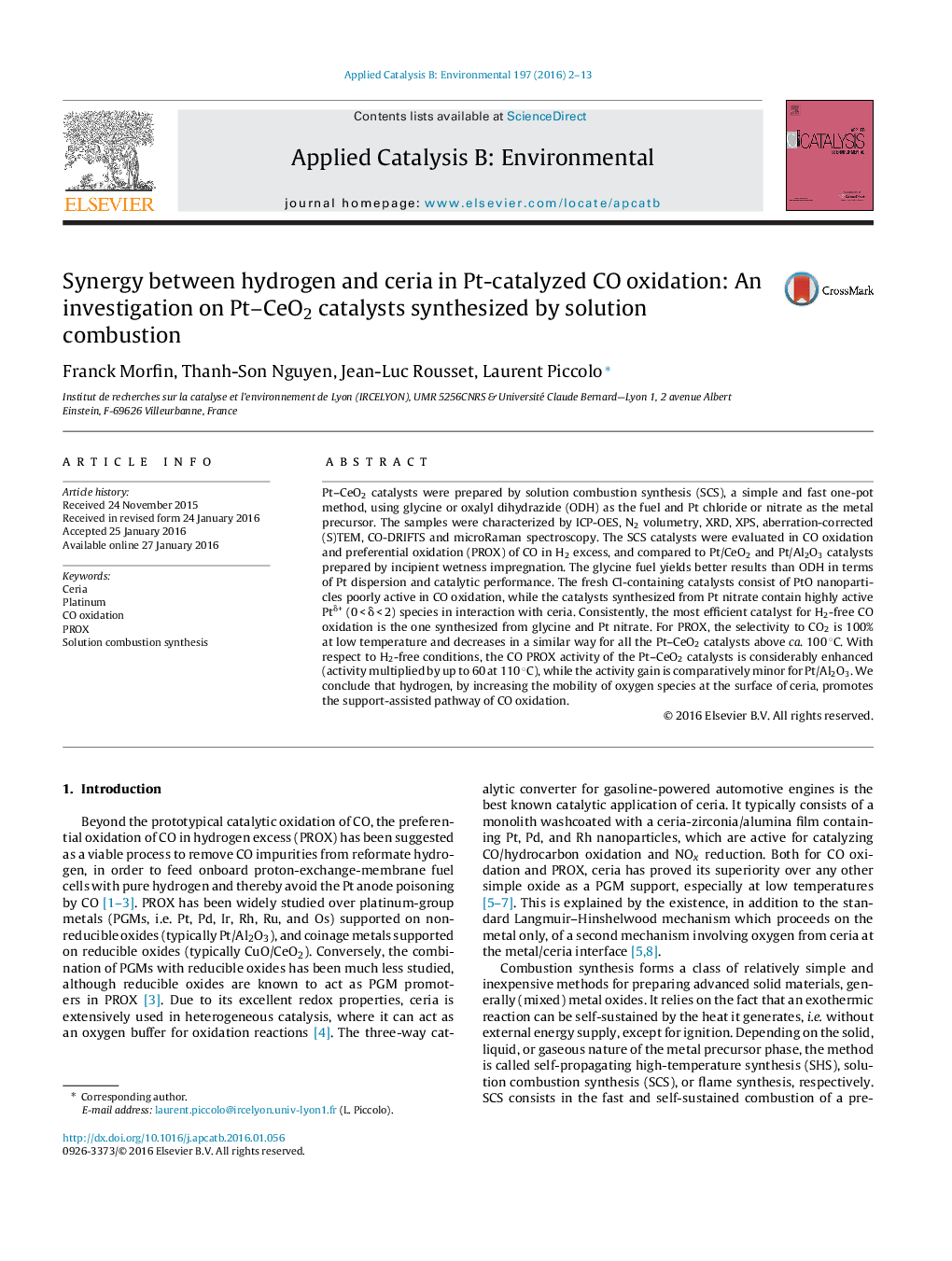| کد مقاله | کد نشریه | سال انتشار | مقاله انگلیسی | نسخه تمام متن |
|---|---|---|---|---|
| 45492 | 46413 | 2016 | 12 صفحه PDF | دانلود رایگان |

• The presence of H2 and a ceria support (instead of alumina) promote Pt-catalyzed CO oxidation.
• The most active state for CO oxidation is Ptδ+ (0 < δ < 2) in interaction with ceria.
• For Pt dispersion over ceria, glycine is preferable to oxalyl dihydrazide as a fuel for solution combustion synthesis.
• Chlorine is detrimental to H2-free CO oxidation but only slightly affects PROX.
Pt–CeO2 catalysts were prepared by solution combustion synthesis (SCS), a simple and fast one-pot method, using glycine or oxalyl dihydrazide (ODH) as the fuel and Pt chloride or nitrate as the metal precursor. The samples were characterized by ICP-OES, N2 volumetry, XRD, XPS, aberration-corrected (S)TEM, CO-DRIFTS and microRaman spectroscopy. The SCS catalysts were evaluated in CO oxidation and preferential oxidation (PROX) of CO in H2 excess, and compared to Pt/CeO2 and Pt/Al2O3 catalysts prepared by incipient wetness impregnation. The glycine fuel yields better results than ODH in terms of Pt dispersion and catalytic performance. The fresh Cl-containing catalysts consist of PtO nanoparticles poorly active in CO oxidation, while the catalysts synthesized from Pt nitrate contain highly active Ptδ+ (0 < δ < 2) species in interaction with ceria. Consistently, the most efficient catalyst for H2-free CO oxidation is the one synthesized from glycine and Pt nitrate. For PROX, the selectivity to CO2 is 100% at low temperature and decreases in a similar way for all the Pt–CeO2 catalysts above ca. 100 °C. With respect to H2-free conditions, the CO PROX activity of the Pt–CeO2 catalysts is considerably enhanced (activity multiplied by up to 60 at 110 °C), while the activity gain is comparatively minor for Pt/Al2O3. We conclude that hydrogen, by increasing the mobility of oxygen species at the surface of ceria, promotes the support-assisted pathway of CO oxidation.
Figure optionsDownload as PowerPoint slide
Journal: Applied Catalysis B: Environmental - Volume 197, 15 November 2016, Pages 2–13